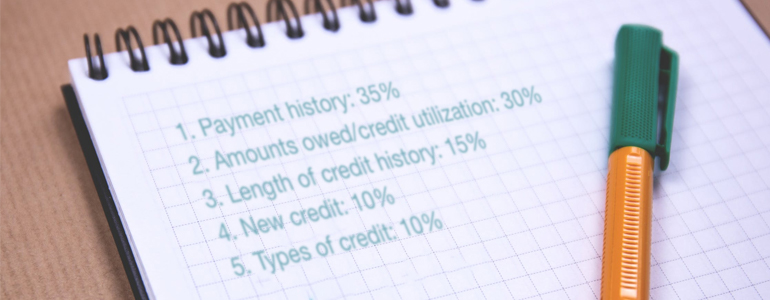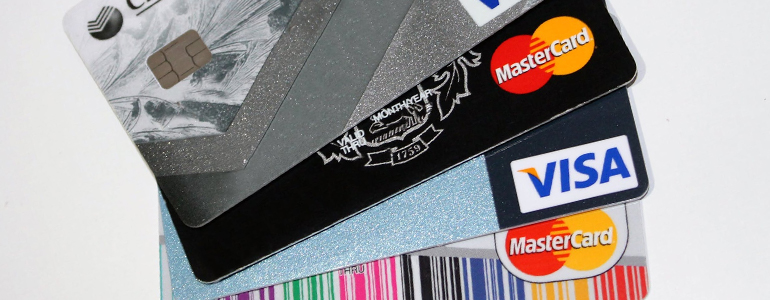You probably don’t think much about your credit score until you need to as it mostly affects bigger life decisions, like buying or renting property, getting an auto loan, or opening financial accounts. When one of those decisions comes along, though, a few extra points on your score can save you a lot of money on interest payments—or at least get you a credit card with better rewards. It takes a long time and good financial habits to build a strong credit score, so it’s important to know what exactly goes into it and how what you do (or don’t do) can ultimately impact your financial future.
The reporting agencies
There are three main credit reporting agencies, or bureaus, that maintain files on people with credit histories in the U.S: Equifax, Experian, and TransUnion. Their job is to keep track of your credit accounts, payment history, total available credit, bankruptcies, et cetera. They also know personal information, like employment history, addresses, and family, but that isn’t part of your score. Businesses that want to check up on you, from businesses to landlords, can request that these bureaus send over their report on you.

The scores
The big three credit bureaus each calculate their own score (your report is available from any of them on request), but they aren’t very widely used. Another metric, VantageScore, was created by the three major bureaus to compete with FICO, and is used by some lenders, but the score that really matters is the FICO, which is the measurement that “credit score” most often refers to.
For this reason, when you check your credit score online you should double-check to make sure it’s the official FICO score—you might just be seeing your Equifax/Experian/TransUnion score, which will be different. Each score is calculated differently and depends on slightly different data, but all of them, including the FICO, will give you a number ranging from around 300 to around 850, with higher scores reflecting a more reliable credit history.
Factors that affect your score
The exact algorithms that calculate your credit score are all proprietary, meaning it’s impossible to figure out exactly how each variable is weighted. The general information is out there, though, and it’s not hard to figure out the basic things you need to do to build a good score.
- Payment history: 35%What it is: This is the most important part of your score. It’s essentially your entire financial life, recording every payment you’ve made on time, every one you’ve missed, how late you’ve been, your bankruptcies, foreclosures, et cetera.How to get a good score: Missing even one payment will cut into your score quite a bit, and negative marks stay on your record for seven years. Try to pay 100% of your bills on or before the due date, or, if you’re already below 100%, make it your top priority to pay on time.
- Amounts owed/credit utilization: 30%What it is: The other major factor on your report is how much of your available credit you tend to use. For example, if you have two credit cards, each with a $5,000 limit, you have $10,000 of available credit in total. If you put $1,000 on your cards, you’ll be at 10% credit utilization, which isn’t a bad number.How to get a good score: Lower credit utilization is always better: common wisdom is that using more than 30% of your available credit will start raising red flags, but it’s better to stay closer to 0%. This is a fairly easy metric to get a good score on: just don’t spend as much on your cards or, if it makes sense for you, open up a few new lines of credit to increase your total available utilization.
- Length of credit history: 15%What it is: The top two factors make up the majority of your FICO score, but length of your credit history is also important. This one is basically just what it sounds like: it’s the total age of your accounts divided by the number of accounts you have open. Say you have two cards, A and B. Card A has been open for one year, Card B for two years. Your total credit history length is three years, but because you have two accounts, the average age is just 1.5 years.How to get a good score: If you’re new to credit or have a lot of accounts open, this could be an issue for you, but it only accounts for 15% of your score, so don’t worry too much.
This can also be an excellent reason not to cancel your credit card. - New credit: 10%What it is: This number measures how much of your credit is “new,” mostly by keeping track of how many “hard inquiries” have been made about your credit. A hard inquiry or “pull” gets its name from the fact that it will lower your score by a few points, while soft inquiries won’t.How to get a good score: Unless you get a lot of pulls in a short amount of time, you don’t need to worry about this factor though. It’s more important to weigh the impact of a shorter average credit history vs the benefit of an increased line of credit, as these pulls come off your record in about year.
- Types of credit: 10%This is another one you don’t have to worry about much, but it can be useful to know. Having a good mix of credit on your account is seen positively by lenders because it shows you can handle lots of different responsibilities. The three main times of credit accounts are revolving, installment, and open credit:
- Revolving: the most common type, refers to credit cards/home equity where you make monthly payments
- Installment credit: this category is all about loans—student, auto, personal, mortgages, etc.
- Open credit: This one is quite rare, offering accounts that let you spend on credit, but require that you pay the full amount back each month (no minimum payments like with cards)
How to get a good score: Having a mix can help your credit score, but it’s not a big enough factor to merit you taking out any kind of loan to get a few extra points.

FICO scoring ranges
The average American has decent credit, with the 50th percentile being roughly 700 points, so as long as you haven’t made any major mistakes with your finances, you’ll probably be on the higher end of this scale. There are a few different ways to divide it up, but they all follow roughly this breakdown:
- 300-559: Poor. Your applications are unlikely to get very far, and the cards you do get will probably be secured or have a very high interest rate and low rewards.
- 580-669: Fair. You’ll probably be approved for lines of credit and loans, but you won’t get the best cards or rates.
- 670-739: Good. Most credit opportunities will be open to you, but interest rates will be higher.
- 740-799: Very good. Expect lenders to approve you pretty quickly and your interest rates to be pretty attractively low.
- 800-850: Excellent. You’ve probably been using credit for a long time without any issues, and you will be rewarded with low-interest, high-reward cards and loans. Stay responsible!
Repairing bad credit
The first step in repairing bad credit is to start building good credit by having good financial habits (hint: do the stuff above), but if you need help getting started, there are some options especially for you.
- Apply for a secured credit card. These are credit cards that you pay in advance. It’s a lot like a gift card, except that technically the money you load the card with will be paying off the credit you use, getting you an automatic payment history.
- Credit-builder loans: Much like secured credit cards, these loans are a pay-upfront deal. Essentially, you borrow money, but the bank doesn’t give it to you—they lock it up in an account that stays locked until you’ve paid them the full amount, after which they release it to you.
- Become an authorized user: Being associated with someone else’s account can actually be good for your own credit (as long as their credit is decent!), whether you actually spend money on the card or not. All it really needs is to have your name on the account.
- Alternative credit: Try to get credit for rent, utility payments, and other bills that you consistently pay on time. These often aren’t reported to credit agencies, but your landlord/utility company may be able to do it for you.



